About Goda Masala
Goda masala is a special spice blend unique to Maharashtrian cuisine. The spices used here are aromatic, and lend a subtle sweet aroma without hints of pungency or heat. I usually make a small batch at a time (about 100 grams) and then add to my everyday cooking. Goda or god (pronounced “goad-AH”) means “sweet” in marathi. As such, this is sometimes referred to as sweet masala. However, it should be noted that goda masala is sweet in aroma, not in taste. This aromatic spice blend is added to many Maharashtrian dishes comprising of veggies, lentils and rice. A few recipes that always use goda masala are: Tendli Bhaat, Bharli Bhendi, Amti, Bharli Vangi, and Katachi Amti. I also make Garam Masala, which is added to the usual Punjabi or North Indian food I prepare. I prefer to make my own dry masalas at home like Sambar Powder, Bisi Bele Bath Powder, Pav Bhaji Masala, Biryani Masala, Coriander Powder etc. These small batches of homemade masalas are much more potent than the store bought kind, because whole spices retain more of their essential oils. Once you try making your own homemade masalas, you’ll see and taste the difference for yourself. Each Maharashtrian household has their own signature recipe for goda masala and the proportions of the spices vary from home to home. This tried and true recipe is the one I always turn to. Even when I add just 2 to 3 teaspoons to a recipe, it changes the flavor and taste for the better. The food we grow up eating always retain a deep impression on our psyche, and no matter where we are, we always long back to go to our roots. I hope that this delicious goda masala helps you get back to yours!
Kala Masala vs Goda Masala
Aside from goda masala, there are two more spice mixes that are unique to Maharashtrian food. One is kanda lahsun masala (onion garlic masala) and the other is kala masala (black masala). Kala masala and goda masala are terms that are often used interchangeably, but they are different. For more clarification, I asked my Maharastrian friend about the difference between kala masala and goda masala. She said that in kala masala she adds onions, but the rest of the spices and ingredients are same. The onions for kala masala are sliced and then sun dried. Once they become crisp, she sautés them in oil till they turn golden. They become so crispy and dry that if you break or snap them, they turn to powder. She also said that the other spices and coconut get more deeply roasted in kala masala, which lends a darker hue. This extra roasting also helps in giving a longer shelf life to the masala and gives a really good aroma, depth and flavor. The fried onions also give the kala masala a darker, brownish-black color than goda masala. It should come as no shock that the name kala means “black” in Marathi! As a yearly ritual, my friend makes about 2.5 to 3 kilos of each kala masala and the Maharashtrian garam masala during the summers. These masalas last her for a year. The spices are roasted in oil and then given to a mill where they grind spices in bulk. Isn’t that wonderful? I usually make a small batch which gives about 80 to 100 grams of this masala. This much works for me – as I make recipes that need this spice blend sometimes and not everyday. I recommend this recipe – which yields about 250 grams of goda masala – for home cooks who are new to this spice blend, but want enough in the cupboard to stretch for awhile. Please note that each ingredient is roasted – separately – on a low heat. I recommend you do this as well, as the spices roast at different speeds; if you try roasting them together, some will likely end up burned. You will need to spare a good 1 hour to make this masala, so clear your schedule. I promise it will be worth the effort!
Few Unique Ingredients
If your only exposure to masalas thus far has been with spicy garam masala, this goda masala recipe is going to taste and feel quite different. Here are some of the ingredients that contribute to this delicious spice mix’s unique flavor:
Stone Flower (Parmotrema Perlatum). Also known as rock flower in English, or kalpasi or patthar ke phool in Hindi. In Marathi, it is known as dagad phool. It should be noted that this culinary lichen doesn’t have much flavor when raw, but releases a smoky, earthy, somewhat astringent flavor when it comes in contact with heat. As such, you should always roast or fry kalpasi using proper technique.Cobra’s Saffron (Mesua Ferrea), is also known as ceylon ironwood in English. It is called Nagkesar in Hindi and Nagkeshar in Marathi. This herb is also used in Ayurvedic medicines, and has a citrusy-woodsy flavor.Desiccated coconut and sesame seeds also impart a great deal of flavor, lending a sweet, nutty flavor to the masala.Small black seeds known as Niger seeds (not to be confused with nigella seeds), are also an ineffable flavor of this delightful spice mix. They are also called karale or khurasni in Marathi, and ramtil in Hindi. A dry chutney can also be made using these sweetly aromatic and nutty flavored seeds.
Note: Some varieties of niger seeds can be bitter; if you have bitter niger seeds, then please do not add them in the recipe. Bitter tasting niger seeds can be toxic. I can promise that the goda masala turns out fabulously without them, too. Depending on where you live, you may not be able to easily source stone flower, cobra’s saffron and niger seeds. To get an authentic goda masala, I would suggest not to skip stone flower (dagad phool), but if needed you may skip nagkeshar/cobra’s saffron and niger seeds. I usually add desiccated coconut flakes to goda masala. For another interpretation, my friend suggests that it is best to use dried coconut shells. You grate the dried coconut shell and then roast them, which gives a more intense flavor than using desiccated coconut flakes.
How to make Goda Masala
Before you begin roasting the spices, measure and gather all your ingredients and set them aside. Use a small-sized but heavy frying pan or skillet. Do stir often when roasting these delicate spices and tiny seeds, so that they cook evenly and do not get burnt.
Roast Spices
- Heat 1 teaspoon of neutral flavored oil in a pan.
- Add 8 tablespoons coriander seeds. Stir often on low heat and roast them till they become fragrant and change color. Remove to a plate.
- Then add 2 tablespoons cumin seeds. Again stir on low heat and roast them till they are fragrant and they change color. Remove to the same plate.
- Next add 2 teaspoons of caraway seeds and follow the same method of roasting until fragrant.
- Now add 3 teaspoons of niger seeds (karale). These are wonderfully fragrant and should be roasted very lightly until you can smell them. Tip: Remember not to over-do the roasting as it can make these seeds taste bitter. Note: If you cannot source or get niger seeds, then skip adding them.
- Next to go are 7 tablespoons sesame seeds; roast till they crackle and change color. Keep on stirring so that the color is uniform.
- Once done, remove and keep aside on the same plate as all the other ingredients.
- Roast 6 tablespoons desiccated coconut till golden. You will have to continuously stir to get a uniform color. If you prefer a darker color, you can roast a tad more than what I have done.
- Add 4 to 5 broken dry red chilies and roast till they have a smoky, pungent fragrance. You can deseed the chilies if you prefer a milder masala, or omit them altogether.
- Add ¼ teaspoon asafoetida and dry roast till fragrant – this takes a few seconds. Remember to keep heat low if using a heavy pan or skillet. If your pan is not heavy or sturdy, then turn off heat. Add asafoetida and roast it.
- Again heat 1 teaspoon of oil in the pan.
- Now add all the below listed fragrant spices:
4 to 5 pieces of 1 inch cinnamon sticks7 to 8 small-sized tej patta ½ teaspoon black peppercorns3 to 4 star anise25 clovesseeds from 4 black cardamoms5 to 6 green cardamoms1 teaspoon cobra’s saffron (nagkesar)3 tablespoons of stone flower (dagad phool or patthar ke phool)
On low heat, roast till the spices become aromatic, about a minute. Set aside.
Make Goda Masala
- Let all the spices and the rest of the other ingredients cool.
- In a mixer-grinder or coffee-grinder or spice-grinder, grind everything in batches. I ground in two batches, but if you have a small grinder, then you will have to grind in 4 to 5 batches. Because of the oil present in the spices and sesame seeds, you will have to scrape the sides and then continue to grind as needed.
- Take the ground goda masala in a bowl and mix everything well. If the masala is warm due to the mixer-grinder being heated up, then let it cool completely.
- Store the Goda Masala in a clean, airtight jar. You can keep at room temperature for about 1 to 2 months or in the refrigerator for up-to 6 months. Please be sure to rate the recipe in the recipe card or leave a comment below if you have made it. For more vegetarian inspirations, Sign Up for my emails or follow me on Instagram, Youtube, Facebook, Pinterest or Twitter. Chai Masala Powder (Masala Tea Powder) Rasam Powder Recipe | Homemade Rasam Podi Idli Podi Recipe Panch Phoron (Bengali 5 Spice Mix) This Goda Masala recipe from the archives first published in July 2014 has been updated and republished on January 2023.
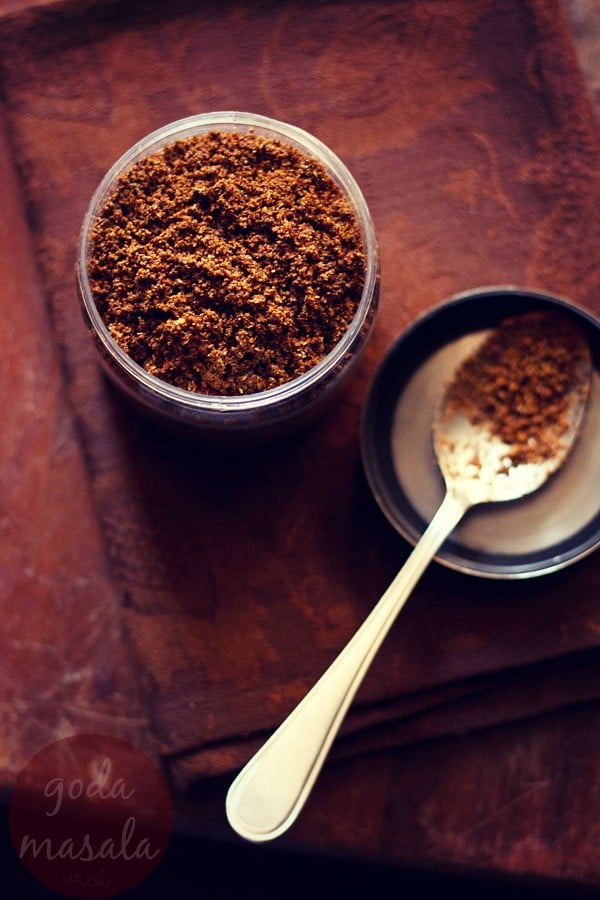
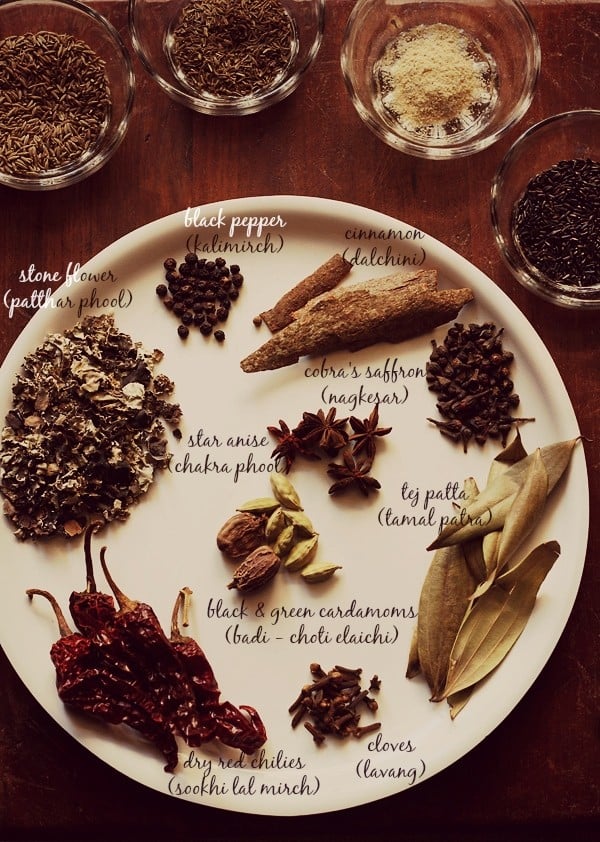
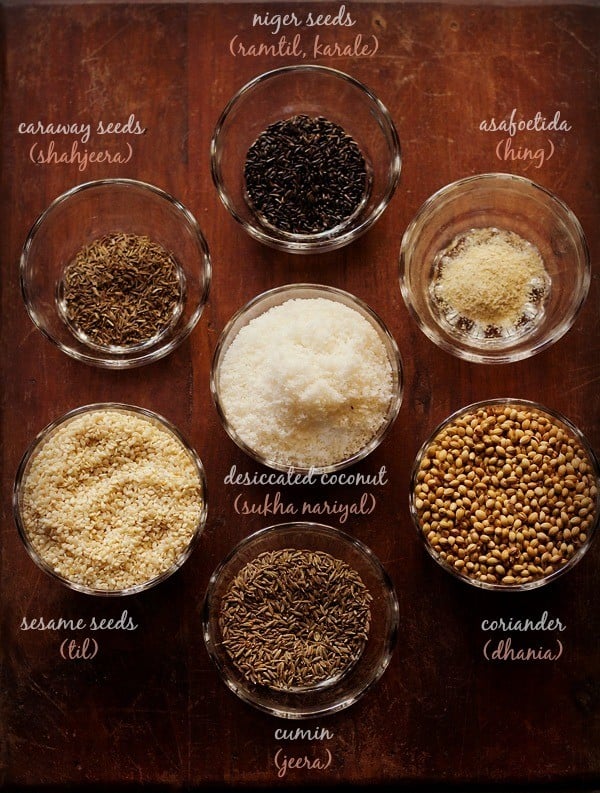
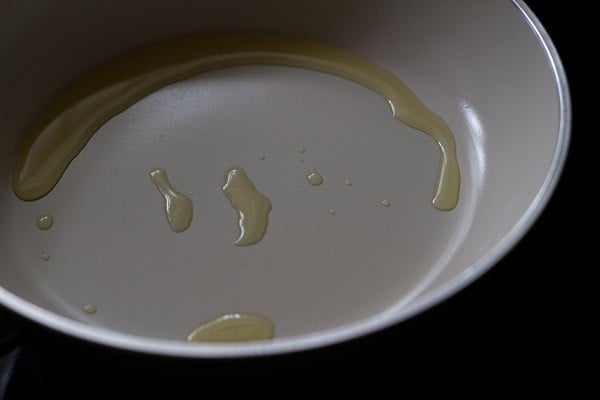
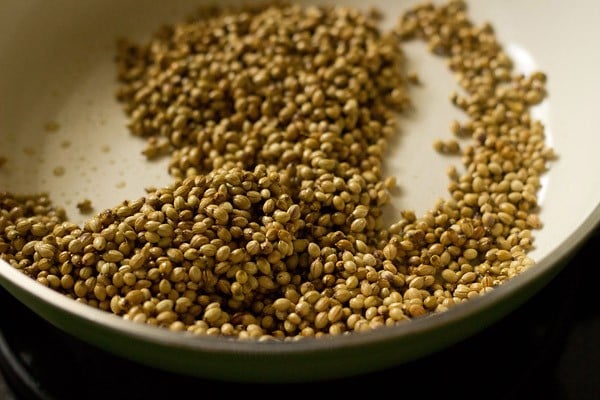
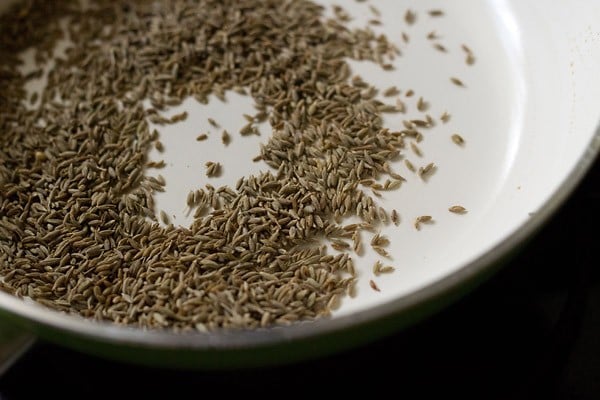

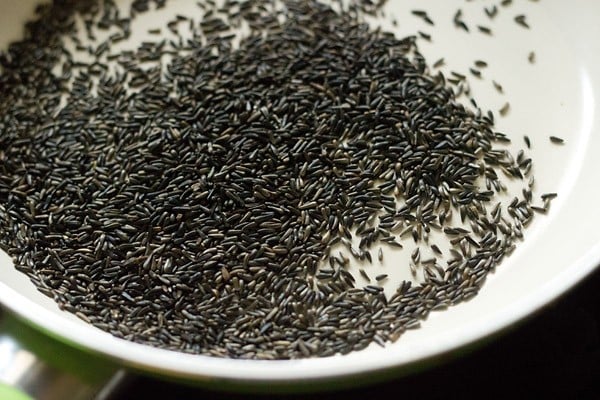
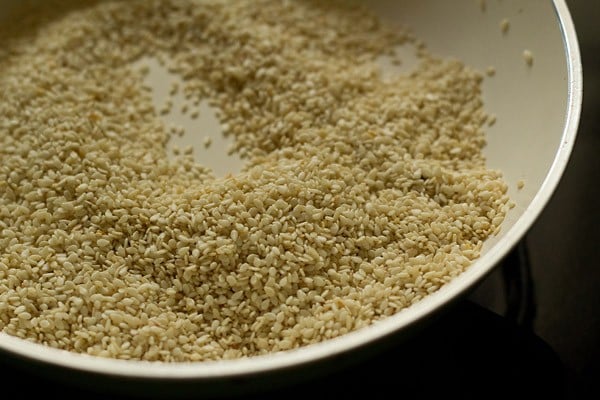
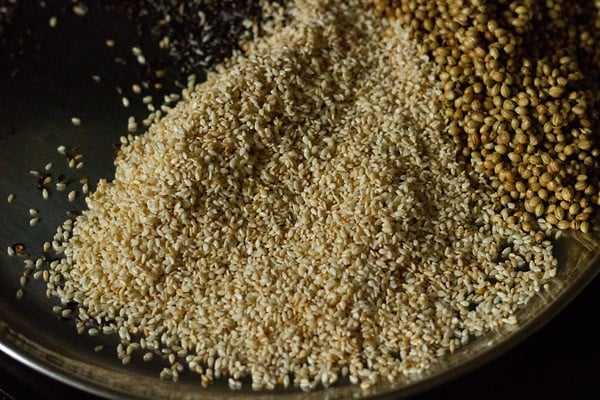
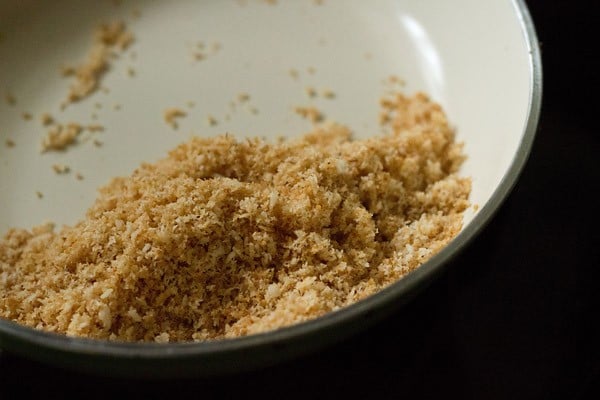
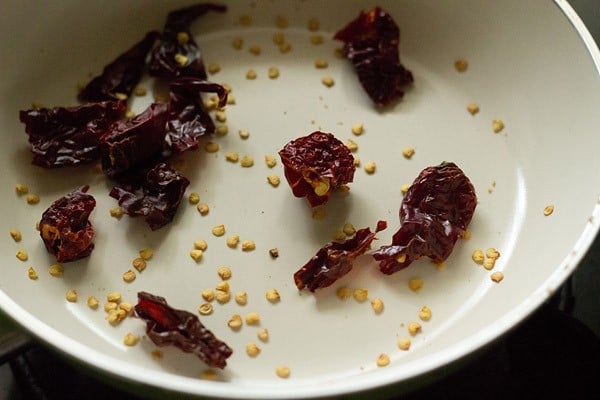
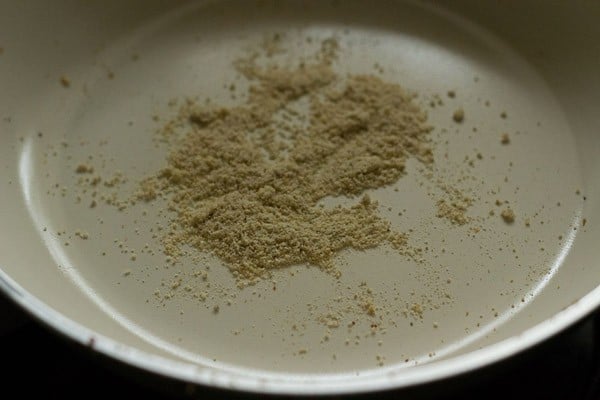
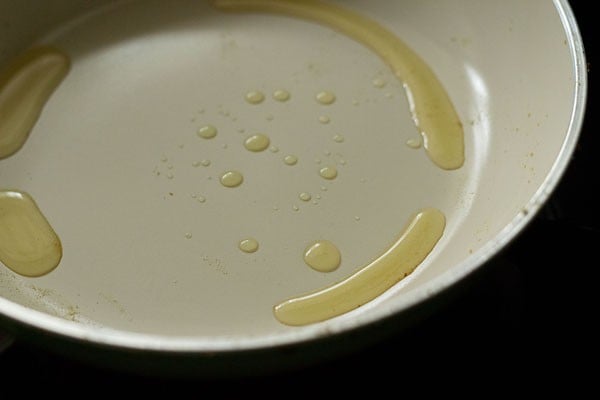
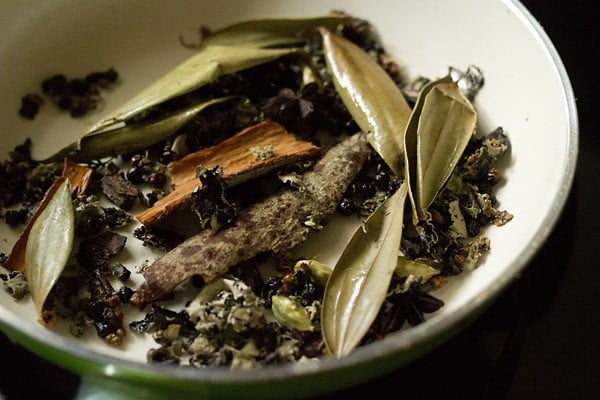
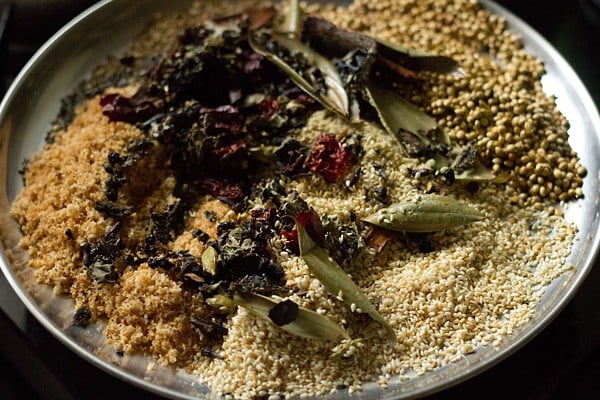
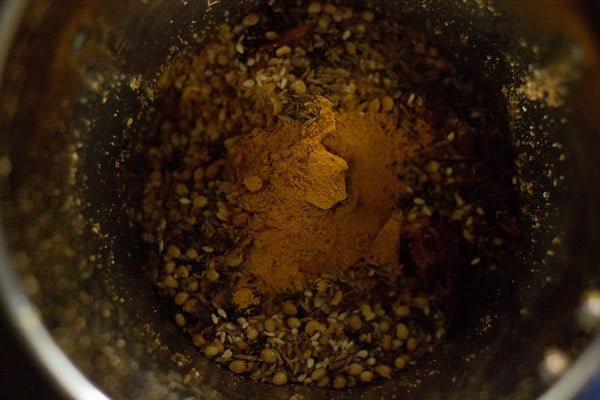
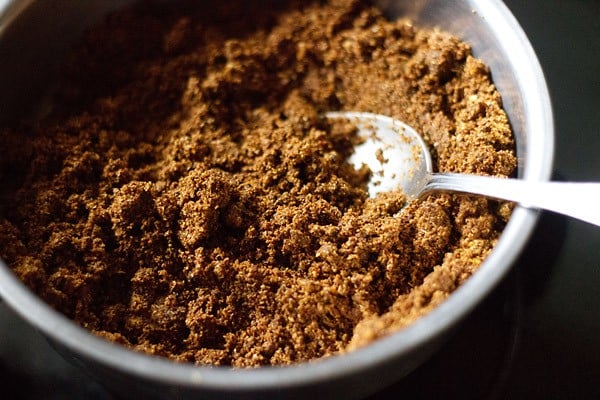
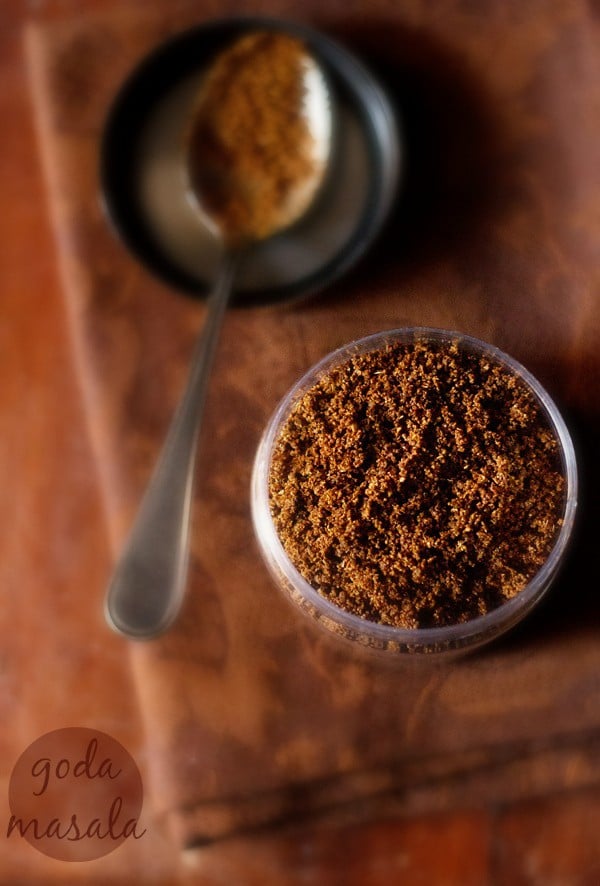
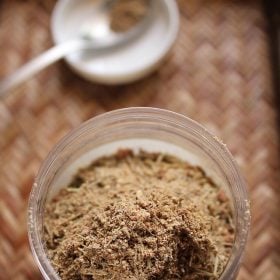
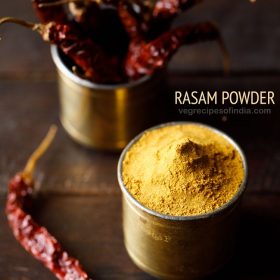
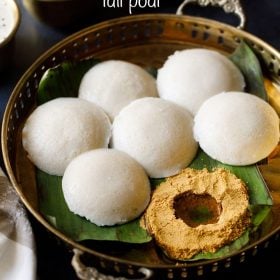

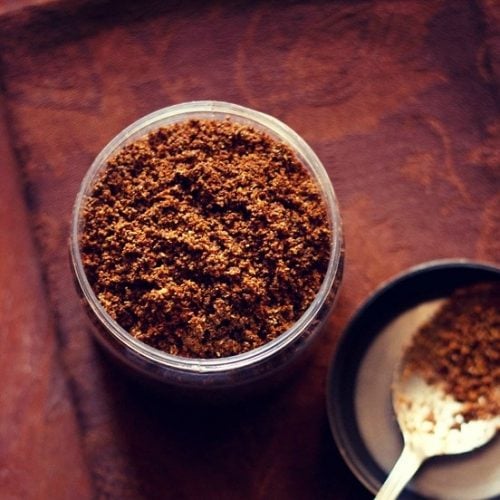
title: “Goda Masala Recipe Amti Masala” ShowToc: true date: “2024-10-02” author: “Matthew Martin”
About Goda Masala
Goda masala is a special spice blend unique to Maharashtrian cuisine. The spices used here are aromatic, and lend a subtle sweet aroma without hints of pungency or heat. I usually make a small batch at a time (about 100 grams) and then add to my everyday cooking. Goda or god (pronounced “goad-AH”) means “sweet” in marathi. As such, this is sometimes referred to as sweet masala. However, it should be noted that goda masala is sweet in aroma, not in taste. This aromatic spice blend is added to many Maharashtrian dishes comprising of veggies, lentils and rice. A few recipes that always use goda masala are: Tendli Bhaat, Bharli Bhendi, Amti, Bharli Vangi, and Katachi Amti. I also make Garam Masala, which is added to the usual Punjabi or North Indian food I prepare. I prefer to make my own dry masalas at home like Sambar Powder, Bisi Bele Bath Powder, Pav Bhaji Masala, Biryani Masala, Coriander Powder etc. These small batches of homemade masalas are much more potent than the store bought kind, because whole spices retain more of their essential oils. Once you try making your own homemade masalas, you’ll see and taste the difference for yourself. Each Maharashtrian household has their own signature recipe for goda masala and the proportions of the spices vary from home to home. This tried and true recipe is the one I always turn to. Even when I add just 2 to 3 teaspoons to a recipe, it changes the flavor and taste for the better. The food we grow up eating always retain a deep impression on our psyche, and no matter where we are, we always long back to go to our roots. I hope that this delicious goda masala helps you get back to yours!
Kala Masala vs Goda Masala
Aside from goda masala, there are two more spice mixes that are unique to Maharashtrian food. One is kanda lahsun masala (onion garlic masala) and the other is kala masala (black masala). Kala masala and goda masala are terms that are often used interchangeably, but they are different. For more clarification, I asked my Maharastrian friend about the difference between kala masala and goda masala. She said that in kala masala she adds onions, but the rest of the spices and ingredients are same. The onions for kala masala are sliced and then sun dried. Once they become crisp, she sautés them in oil till they turn golden. They become so crispy and dry that if you break or snap them, they turn to powder. She also said that the other spices and coconut get more deeply roasted in kala masala, which lends a darker hue. This extra roasting also helps in giving a longer shelf life to the masala and gives a really good aroma, depth and flavor. The fried onions also give the kala masala a darker, brownish-black color than goda masala. It should come as no shock that the name kala means “black” in Marathi! As a yearly ritual, my friend makes about 2.5 to 3 kilos of each kala masala and the Maharashtrian garam masala during the summers. These masalas last her for a year. The spices are roasted in oil and then given to a mill where they grind spices in bulk. Isn’t that wonderful? I usually make a small batch which gives about 80 to 100 grams of this masala. This much works for me – as I make recipes that need this spice blend sometimes and not everyday. I recommend this recipe – which yields about 250 grams of goda masala – for home cooks who are new to this spice blend, but want enough in the cupboard to stretch for awhile. Please note that each ingredient is roasted – separately – on a low heat. I recommend you do this as well, as the spices roast at different speeds; if you try roasting them together, some will likely end up burned. You will need to spare a good 1 hour to make this masala, so clear your schedule. I promise it will be worth the effort!
Few Unique Ingredients
If your only exposure to masalas thus far has been with spicy garam masala, this goda masala recipe is going to taste and feel quite different. Here are some of the ingredients that contribute to this delicious spice mix’s unique flavor:
Stone Flower (Parmotrema Perlatum). Also known as rock flower in English, or kalpasi or patthar ke phool in Hindi. In Marathi, it is known as dagad phool. It should be noted that this culinary lichen doesn’t have much flavor when raw, but releases a smoky, earthy, somewhat astringent flavor when it comes in contact with heat. As such, you should always roast or fry kalpasi using proper technique.Cobra’s Saffron (Mesua Ferrea), is also known as ceylon ironwood in English. It is called Nagkesar in Hindi and Nagkeshar in Marathi. This herb is also used in Ayurvedic medicines, and has a citrusy-woodsy flavor.Desiccated coconut and sesame seeds also impart a great deal of flavor, lending a sweet, nutty flavor to the masala.Small black seeds known as Niger seeds (not to be confused with nigella seeds), are also an ineffable flavor of this delightful spice mix. They are also called karale or khurasni in Marathi, and ramtil in Hindi. A dry chutney can also be made using these sweetly aromatic and nutty flavored seeds.
Note: Some varieties of niger seeds can be bitter; if you have bitter niger seeds, then please do not add them in the recipe. Bitter tasting niger seeds can be toxic. I can promise that the goda masala turns out fabulously without them, too. Depending on where you live, you may not be able to easily source stone flower, cobra’s saffron and niger seeds. To get an authentic goda masala, I would suggest not to skip stone flower (dagad phool), but if needed you may skip nagkeshar/cobra’s saffron and niger seeds. I usually add desiccated coconut flakes to goda masala. For another interpretation, my friend suggests that it is best to use dried coconut shells. You grate the dried coconut shell and then roast them, which gives a more intense flavor than using desiccated coconut flakes.
How to make Goda Masala
Before you begin roasting the spices, measure and gather all your ingredients and set them aside. Use a small-sized but heavy frying pan or skillet. Do stir often when roasting these delicate spices and tiny seeds, so that they cook evenly and do not get burnt.
Roast Spices
- Heat 1 teaspoon of neutral flavored oil in a pan.
- Add 8 tablespoons coriander seeds. Stir often on low heat and roast them till they become fragrant and change color. Remove to a plate.
- Then add 2 tablespoons cumin seeds. Again stir on low heat and roast them till they are fragrant and they change color. Remove to the same plate.
- Next add 2 teaspoons of caraway seeds and follow the same method of roasting until fragrant.
- Now add 3 teaspoons of niger seeds (karale). These are wonderfully fragrant and should be roasted very lightly until you can smell them. Tip: Remember not to over-do the roasting as it can make these seeds taste bitter. Note: If you cannot source or get niger seeds, then skip adding them.
- Next to go are 7 tablespoons sesame seeds; roast till they crackle and change color. Keep on stirring so that the color is uniform.
- Once done, remove and keep aside on the same plate as all the other ingredients.
- Roast 6 tablespoons desiccated coconut till golden. You will have to continuously stir to get a uniform color. If you prefer a darker color, you can roast a tad more than what I have done.
- Add 4 to 5 broken dry red chilies and roast till they have a smoky, pungent fragrance. You can deseed the chilies if you prefer a milder masala, or omit them altogether.
- Add ¼ teaspoon asafoetida and dry roast till fragrant – this takes a few seconds. Remember to keep heat low if using a heavy pan or skillet. If your pan is not heavy or sturdy, then turn off heat. Add asafoetida and roast it.
- Again heat 1 teaspoon of oil in the pan.
- Now add all the below listed fragrant spices:
4 to 5 pieces of 1 inch cinnamon sticks7 to 8 small-sized tej patta ½ teaspoon black peppercorns3 to 4 star anise25 clovesseeds from 4 black cardamoms5 to 6 green cardamoms1 teaspoon cobra’s saffron (nagkesar)3 tablespoons of stone flower (dagad phool or patthar ke phool)
On low heat, roast till the spices become aromatic, about a minute. Set aside.
Make Goda Masala
- Let all the spices and the rest of the other ingredients cool.
- In a mixer-grinder or coffee-grinder or spice-grinder, grind everything in batches. I ground in two batches, but if you have a small grinder, then you will have to grind in 4 to 5 batches. Because of the oil present in the spices and sesame seeds, you will have to scrape the sides and then continue to grind as needed.
- Take the ground goda masala in a bowl and mix everything well. If the masala is warm due to the mixer-grinder being heated up, then let it cool completely.
- Store the Goda Masala in a clean, airtight jar. You can keep at room temperature for about 1 to 2 months or in the refrigerator for up-to 6 months. Please be sure to rate the recipe in the recipe card or leave a comment below if you have made it. For more vegetarian inspirations, Sign Up for my emails or follow me on Instagram, Youtube, Facebook, Pinterest or Twitter. Chai Masala Powder (Masala Tea Powder) Rasam Powder Recipe | Homemade Rasam Podi Idli Podi Recipe Panch Phoron (Bengali 5 Spice Mix) This Goda Masala recipe from the archives first published in July 2014 has been updated and republished on January 2023.























